Wildflowers, Grasses and Other Nonwoody Plants
Media

Species Types
Scientific Name
Thalia dealbata
Description
With its large, paddle-shaped, blue-green leaves, powdery thalia looks a lot like the tropical cannas used in landscaping. In late summer, this native pond or marsh plant produces tall spikes of purple flower clusters.
Media

Species Types
Scientific Name
Echinodorus berteroi
Description
A plant of shorelines and shallow water, tall burhead has clusters of beaked seeds that develop in the fall. Hundreds of these spiny seed heads, held in clusters above the water, make it distinctive.
Media
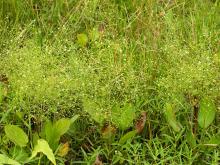
Species Types
Scientific Name
Alisma spp.
Description
With their whorl of oval leaves with thick, ridged stems, water plantains look like giant versions of the plantains that commonly appear in yards. Water plantains are water-edge plants that bear large, branching stalks of tiny white flowers.
Media
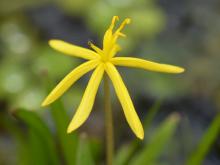
Species Types
Scientific Name
Heteranthera dubia (syn. Zosterella dubia)
Description
Water star-grass is an attractive underwater plant. When it flowers, it’s easy to identify. Each bloom is a bright yellow star with six narrow petal lobes, raised just above the water surface.
Media
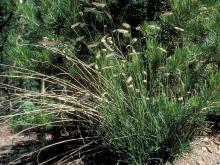
Species Types
Scientific Name
Bouteloua gracilis
Description
Blue grama is a native perennial warm-season short grass that forms dense clumps. The flowering stems are 6–12 inches tall, and the short, curving, one-sided seed head resembles an eyebrow. In Missouri, it occurs mostly in our northwestern loess hill prairies.
Media
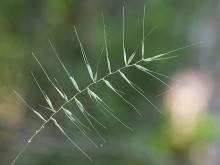
Species Types
Scientific Name
Elymus hystrix
Description
Bottlebrush grass is a native perennial, tuft-forming wild rye that typically grows in woodlands. The widely spaced spikelets spread away at a right angle from the main flowering stem.
Media

Species Types
Scientific Name
Buchloe dactyloides
Description
Buffalo grass is a native perennial warm-season short grass that creeps widely by runners and forms dense mats. As a native, it occurs in the prairies in far northwest Missouri, but it now occurs elsewhere in the state and has become popular as a lawn grass.
Species Types
Scientific Name
Bromus pubescens (formerly B. purgans)
Description
Several species of brome grasses are found in Missouri. Canada brome, or hairy woodland brome, is one of the few that are native. It grows to 4 feet high, and its open flower clusters have drooping spikelets.
Media
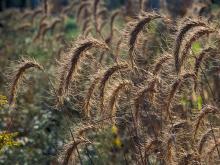
Species Types
Scientific Name
Elymus canadensis
Description
Canada wild rye can be identified by its bristly seed heads, which curve downward. As the seeds mature, the straight, long awns curve and bend. This is a common native cool-season grass that reaches about 4 feet tall and is highly valued as forage and hay for livestock.
Media
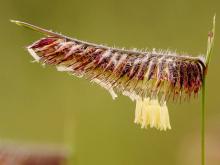
Species Types
Scientific Name
Bouteloua hirsuta
Description
Hairy grama is a native perennial warm-season short grass that forms dense clumps. The flowering stems are 4–16 inches tall, and the short, curving, one-sided, hairy seed head ends in a needle-like point. Very uncommon in our state, it occurs mostly in the loess hill prairies of northwest Missouri.
See Also
About Wildflowers, Grasses and Other Nonwoody Plants in Missouri
A very simple way of thinking about the green world is to divide the vascular plants into two groups: woody and nonwoody (or herbaceous). But this is an artificial division; many plant families include some species that are woody and some that are not. The diversity of nonwoody vascular plants is staggering! Think of all the ferns, grasses, sedges, lilies, peas, sunflowers, nightshades, milkweeds, mustards, mints, and mallows — weeds and wildflowers — and many more!





















